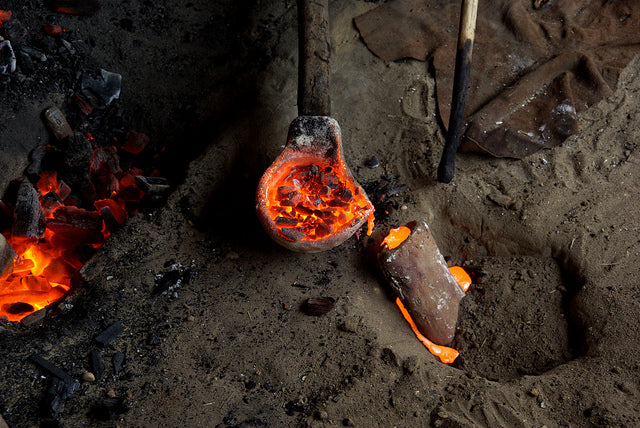Your Cart is Empty


Before high-carbon steel was invented, iron was used to make swords. And before iron was invented, bronze was used for this purpose. Aside from the nuances in strength and ductility, the process for making bronze swords differed from its iron counterpart. Many centuries ago, professional swordsmiths created bronze swords by casting smelted bronze into the shape of the sword, after which they would sharpen and polish the blade. To learn more about the process of making bronze swords, keep reading.
Overview of Casting
The fundamental difference between making an iron sword and making a bronze sword is that the former is forged, whereas the latter is cast. To create a bronze sword, a swordsmith would smelt bronze until it turns into hot liquid metal, after which he would it into a hollow cavity consisting of the sword's shape. Once the bronze metal had cooled, the swordsmith would remove it to complete the swordmaking process.
Casting has been around for much longer than forging. According to "Metal Casting: Computer-Aided Design and Analysis," the process is around 6,000 years old, with some of the earliest examples of cast metal dating back to around 3,200 BC.
Fettling
Another important step in the process of casting a bronze sword is fettling. Fettling refers to the cutting, grinding, sanding and removal of unwanted bits of metal. When swords are cast, imperfections are created in the molds. Some of these imperfections are subtle, consisting of small metal shavings embedded into the blade, while others are larger and more significant. Either way, the swordsmith must remove these imperfects through a process known as fettling.
In most cases, the swordsmith handed down this task to another professional, known as a fettler. The fettler was responsible for removing the imperfections on cast swords, typically through the use of cutting, grinding and sanding the blade. This was painstakingly difficult work, however, and it didn't come without a cost. Fettlers often experienced health problems due to exposure to metal shavings.
Casting vs Forging
While both casting and forging have been used to make swords for thousands of years, forging is undeniably the better method. With forging, swordsmiths have greater control over the process. In feudal Japan, for instance, swordsmiths would cool the spine and edge of swords at different rates to achieve a flexible spine and hard edge. Known as differential heat treatment, it's become a fundamental characteristic of high-quality Japanese swords. Unfortunately, casting doesn't allow for differential heat treatment because of the way in which the metal is smelted and poured into a cavity.
Forging also allows for a sharper, stronger blade. This was a critical element during feudal Japan, as samurai warriors needed sharp swords like the katana and wakizashi to fend off Mongol invaders.
As you can see, the process for making bronze swords differed from iron and steel swords because they were cast rather than forged.